Books by Kirsty M Robertson

Curating Waste - Following the Politics of Plastic across Bodies of Water, 2023
This text is a collection of droplets, a basin of thoughts, concepts and conversations we have ha... more This text is a collection of droplets, a basin of thoughts, concepts and conversations we have had across screens and oceans, and across borders and states. We trace the undercurrents of our collaboration called Curating Waste, a project supported by a bilateral collaboration between Radboud University in Nijmegen, the Netherlands, and Western University in London, Ontario, Canada. In this multi-locational project, we have discussed the political implications of waste in particular that of plastic waste-and its expanding presence in cultural and environmental contexts. We wondered what waste actually is, what art is, and what happens when the two meet. As all of our research locations are deeply connected to bodies of water, the Waal and Rhine rivers in the Netherlands, and Thames River/Deshkaan Ziibing in Southwestern Ontario, we have been physically and intellectually influenced by waters as radically relational matters that have brought us together across an ocean and time zones. Workshop with Martine van Lubeek, November 17, 2022, creating a phonetic map of the bodies of water we listened to at Sonsbeek park, Arnhem Design by Martine van Lubeek
Using the Resources at Hand, 2022
Using the Resources at Hand is designed primarily to help students in the Department of Visual Ar... more Using the Resources at Hand is designed primarily to help students in the Department of Visual Arts at Western University, Canada think about eco-friendly options in designing exhibitions. Skills learned here can also be used elsewhere, and can help to make the cultural sector more sustainable over the long term. The booklet offers tips for low-carbon design, outlines resources in the community, and includes information on borrowing and sharing resources and materials so that we can reduce and reuse within the department.
The Resource guide is also open-source and can be adapted and used by anyone hoping to share information about ecologically-friendly forms of exhibition design.
Every step of exhibition design, from the initial organization to the deinstallation, can benefit from a lower carbon footprint.
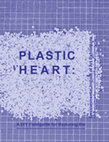
Plastic Heart: A DIY Guide for Reducing the Environmental Impact of Art Exhibitions, 2021
The Synthetic Collective is an interdisciplinary collaboration between visual artists, cultural w... more The Synthetic Collective is an interdisciplinary collaboration between visual artists, cultural workers, and scientists. We work together to sample, map, understand, and visualize the complex ways in which plastics and microplastics pollute the Great Lakes region. We locate our inquiries at the intersection of plastics pollution, geologic processes, and artistic production. Our intent is to follow plastics through from manufacture and consumption to disposal and disaggregation. Interdisciplinarity is crucial to our research methodology – we are led by a driving principle that artists and scientists conduct research together from the outset of the inquiry. As such, we hope to better connect scientific knowledge with arts-based research, and enrich artistic production with informed science. The Synthetic Collective is Kirsty Robertson, Heather Davis, Tegan Moore, Kelly Jazvac, Kelly Wood, Patricia Corcoran, Ian Arturo, Sara Belontz, Lorena Rios Mendoza, and Kathleen Hill.
This Fieldguide traces the research of the Synthetic Collective and the process of putting together a low carbon exhibition focused on plastics.
Fast Fashion / Slow Art, 2019
This provocative publication focuses on videos by contemporary artists and filmmakers that encour... more This provocative publication focuses on videos by contemporary artists and filmmakers that encourage scrutiny of contemporary textile production and distribution. Is it possible to protect workers’ rights and ensure safe working conditions while keeping up with consumer demands? Can design and technology offer sustainable solutions to the environmental effects of fast fashion? What role do art and popular culture have in raising consumer consciousness? These questions and more will spark conversations about issues such as the merits of the local and tailor-made versus the global mass production of fast fashion.
Fast Fashion / Slow Art accompanies an exhibition at The George Washington University Museum and The Textile Museum in Washington, DC in autumn 2019 an at Bowdoin College Museum of Art, Brunswick, Maine, in spring 2020.
A collective project of the Petrocultures Research Group.

Opening discussions about the possible futures of Canadian art history in a time of global analys... more Opening discussions about the possible futures of Canadian art history in a time of global analyses.
At a moment when the discipline of Canadian art history seems to be in flux and the study of Canadian visual culture is gaining traction outside of art history departments, the authors of Negotiations in a Vacant Lot were asked: is "Canada" - or any other nation - still relevant as a category of inquiry? Is our country simply one of many "vacant lots" where class, gender, race, ethnicity, and sexual orientation interact? What happens to the project of Canadian visual history if we imagine that Canada, as essence, place, nation, or ideal, does not exist?
The argument that culture is increasingly used as an economic and socio-political resource resonates strongly with the popular strategies of "urban gurus" such as Richard Florida, and increasingly with government policy. Such strategies both contrast with, but also speak to traditions of Canadian state support for culture that have shaped the national(ist) discipline of Canadian art history. The authors of this collection stand at the multiple points where national culture and globalization collide, however, suggesting that academic investigation of the visual in Canada is contested in ways that cannot be contained by arbitrary borders.
Bringing together the work of scholars from diverse backgrounds and illustrated with dozens of works of Canadian art, Negotiations in a Vacant Lot unsettles the way we have used "nation" to examine art and culture and looks ahead to a global future.
Contributors include Susan Cahill (Nipissing University), Mark A. Cheetham (University of Toronto), Peter Conlin (Academia Sinica, Taipei), Annie Gérin (Université du Québec à Montréal), Richard William Hill (York University), Kristy A. Holmes (Lakehead University), Heather Igloliorte (Concordia University), Barbara Jenkins (Wilfrid Laurier University), Alice Ming Wai Jim (Concordia University), Lynda Jessup (Queen’s University), Erin Morton (University of New Brunswick), Kirsty Robertson (Western University), Rob Shields (University of Alberta), Sarah E.K. Smith (Queen’s University), Imre Szeman (University of Alberta), and Jennifer VanderBurgh (Saint Mary’s University).
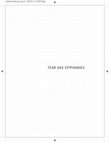
Tear Gas Epiphanies: Protest, Culture, Museums, 2019
Museums are frequently sites of struggle and negotiation. They are key cultural institutions that... more Museums are frequently sites of struggle and negotiation. They are key cultural institutions that occupy an oftentimes uncomfortable place at the crossroads of the arts, culture, various levels of government, corporate ventures, and the public. Because of this, museums are targeted by political action but can also provide support for contentious politics. Though protests at museums are understudied, they are far from anomalous. Tear Gas Epiphanies traces the as-yet-untold story of political action at museums in Canada from the early twentieth century to the present. The book looks at how museums do or do not archive protest ephemera, examining a range of responses to actions taking place at their thresholds, from active encouragement to belligerent dismissal. Drawing together extensive primary-source research and analysis, Robertson questions widespread perceptions of museums, strongly arguing for a reconsideration of their role in contemporary society that takes into account political conflict and protest as key ingredients in museum life. The sheer number of protest actions Robertson uncovers is compelling. Ambitious and wide-ranging, Tear Gas Epiphanies provides a thorough and conscientious survey of key points of intersection between museums and protest. It is a valuable resource for university students and scholars, as well as arts professionals working at and with museums.

"Imagining Resistance: Visual Culture and Activism in Canada offers two separate but interconnect... more "Imagining Resistance: Visual Culture and Activism in Canada offers two separate but interconnected strategies for reading alternative culture in Canada from the 1940s through to the present: first, a history of radical artistic practice in Canada and, second, a collection of eleven essays that focus on a range of institutions, artists, events, and actions. The history of radical practice is spread through the book in a series of short interventions, ranging from the Refus global to anarchist-inspired art, and from Aboriginal curatorial interventions to culture jamming. In each, the historical record is mined to rewrite and reverse Canadian art history—reworked here to illuminate the series of oppositional artistic endeavours that are often mentioned in discussions of Canadian art but rarely acknowledged as having an alternative history of their own.
Alongside, authors consider case studies as diverse as the anti-war work done by John Lennon and Yoko Ono in Montreal and Toronto, recent exhibitions of activist art in Canadian institutions, radical films, performance art, protests against the Olympics, interventions into anti-immigrant sentiment in Montreal, and work by Iroquois photographer Jeff Thomas. Taken together, the writings in Imagining Resistance touch on the local, the global, the national, and post-national to imagine a very different landscape of cultural practice in Canada. "
Papers by Kirsty M Robertson
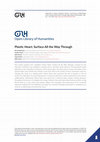
Open Library of the Humanities, 2023
This article explores the exhibition Plastic Heart: Surface All the Way Through. Curated by the S... more This article explores the exhibition Plastic Heart: Surface All the Way Through. Curated by the Synthetic Collective, the exhibition emerged from a scientific study aimed at tracking plastic pellet pollution on the strandlines of beaches of the Great Lakes. This lake system crosses the border of the United States and Canada and contains more than 20% of the world's surface freshwater reserves. Utilizing this study as a starting point, Plastic Heart also examined the role of plastics in the art world, the challenges of conserving plastics in museum collections, and the potential for art-science collaboration. Importantly, Plastic Heart also aimed for a minimal carbon impact, driving decisions throughout the process to mitigate the energy footprint and waste generated during curation. Using Plastic Heart as a case study, the authors address the strengths and weaknesses of the curatorial approach employed in the exhibition and argue for curatorial strategies grounded in complexity as a method of addressing environmental issues.
Textile: Cloth and Culture, 2016
This special issue on the theme of Crafting Community was inspired by the recent proliferation of... more This special issue on the theme of Crafting Community was inspired by the recent proliferation of public and participatory projects in contemporary fiber. We have been watching as more and more artists turn to textile techniques such as knitting, crochet, sewing, quilting, beading, and weaving, in projects that emphasize collaboration, viewer participation, and the performance of making. Whether bringing people together in physical or digital spaces or both, artists are mobilizing textiles to spur interpersonal dialog and exchange, and to educate, build community, and advocate for social change. Their projects create social bonds and foster new types of community, some fleeting and temporary, and others more long term and durational.
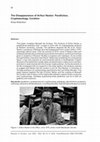
Museum and Society, 2020
This paper considers Beneath the Surface: The Archives of Arthur Nestor, a parafictional exhibiti... more This paper considers Beneath the Surface: The Archives of Arthur Nestor, a parafictional exhibition that I curated in 2014 with 16 undergraduate students at Western University, Canada. The exhibition depicted the life of Dr. Arthur Nestor, a professor of Biology who had disappeared from London (ON) in 1975, seemingly without trace. Over the summer of 2014, some of Nestor’s files and artefacts had been discovered during university renovations, and this archive was given to students in Museum Studies to organize and catalogue. As we sorted through the files, it became clear that Dr. Nestor was something of a controversial figure, a man who became an environmental activist in Southwestern Ontario because of his belief that cryptids (lake monsters) lived in Lakes Huron and Erie, and were in need of protection from human-made pollution. As the documents in his file overlapped with our research in the wider sphere, the evidence seemed to suggest that Nestor had left London to join Dr. Roy Mackal, a University of Chicago professor of cryptozoology searching for the Loch Ness Monster. This paper weaves together the tale of Arthur Nestor and the curating of Beneath the Surface with a history of the relationship between natural history museums and cryptozoology, ultimately questioning what parafiction can do in both art galleries and museums.

published in e-flux, issue 78, December 2016
.... "In 2012, geologist Patricia Corcoran and scul... more published in e-flux, issue 78, December 2016
.... "In 2012, geologist Patricia Corcoran and sculptor Kelly Jazvac travelled to Kamilo Beach, following a tip from oceanographer Charles Moore that the beach was covered in a plastic-sand conglomerate. Moore suspected nearby volcanoes were to blame. In fact, the plastic and beach detritus had been combined into a single substance by bonfires. Human action on the beach had created what Corcoran and Jazvac named “plastiglomerate,” a sand-and-plastic conglomerate. Molten plastic had also in-filled many of the vesicles in the volcanic rock, becoming part of the land that would eventually be eroded back into sand.
The term “plastiglomerate” refers most specifically to “an indurated, multi-composite material made hard by agglutination of rock and molten plastic. This material is subdivided into an in situ type, in which plastic is adhered to rock outcrops, and a clastic type, in which combinations of basalt, coral, shells, and local woody debris are cemented with grains of sand in a plastic matrix.”
More poetically, plastiglomerate indexically unites the human with the currents of water; with the breaking down, over millennia, of stone into sand and fossils into oil; with the quick substration of that oil into fuel; and with the refining of that fuel into polycarbons—into plastic, into garbage. From the primordial muck, to the ocean, to the beach, and back to land, plastiglomerate is an uncanny material marker. It shows the ontological inseparability of all matter, from the micro to the macro...."
To read the essay, go here: www.e-flux.com/journal/78/82878/plastiglomerate/
A catalogue essay to accompany photographer Kelly Wood's Vancouver Carts series.
In this chapter, I begin by exploring the rich history of activist quilting and activist quilt sc... more In this chapter, I begin by exploring the rich history of activist quilting and activist quilt scholarship. I then turn to what I call the expanded field of quilting, following Rosalind Krauss’s (1979: 30-44) term “the expanded field.” Specifically, I analyze the extension of quilting practice in to different contexts and examine the work of a series of artists who do not create traditional quilts but who use the processes of quilting (such as patching, suturing and appliqué) to draw together knowledge, facts, images and artifacts into quilted wholes, often with activist or political intent. I ask whether such works can be read as akin to twenty-first century activist quilts?
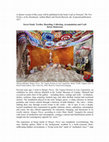
In this essay, I look first at the history of hoarding and bring this discourse up to date to exa... more In this essay, I look first at the history of hoarding and bring this discourse up to date to examine the recent pathologization of hoarding as a mental disease through its 2013 acceptance into the Diagnostic and Statistical Manual of Mental Disorders (DSM-V). Second, because my interest is specifically in textiles, I examine the mass accumulation of yarn, textiles and other goods by crafters. Though fabric and yarn stashes can result in feelings of guilt, they are also understood as storehouses, loaded with the memories of past handmade items and the potential for future projects. Descriptions even of these excessive craft hoards complicate understandings of hoarding as a ‘curable’ mental illness. Third, I consider how a number of contemporary artists have used hoarding and/or the representation of hoards as a strategy to address excess, waste, emotional attachments to objects, and overconsumption. In the final section of the chapter, I bring these threads together to ask whether the increasing presence of hoarding is simply symptomatic of changing patterns of consumption, and whether “hoarding [is] less of a mental illness located in the brain and more of a socialized phenomenon located in the world at large.”. In other words, given the ease of accumulation under late capitalism, is it possible to think about hoarding as a creative response to the amount of stuff circulating in the world as much as it is a pathology? And can we do this by acknowledging that the line between hoarding and over-consumption is a porous one, granted seeming impermeability only insofar as the ambient accumulation of material objects symptomatic of late capitalism is pushed to the background? My overall goal here is to complicate the over-simplified discourse around hoarding through a discussion of the pleasures and guilt of ownership, collecting, and use.
A shorter version of this essay will be published in the book Craft on Demand: The New Politics of the Handmade, Anthea Black and Nicole Burisch, eds. Expected publication 2017.
Rights Discourses, Creative Labor, and the Everyday, 2014
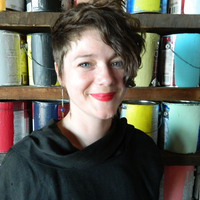
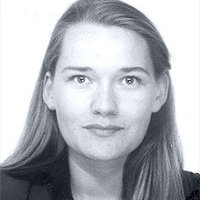
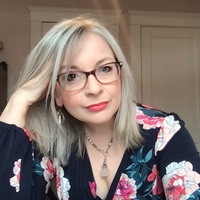
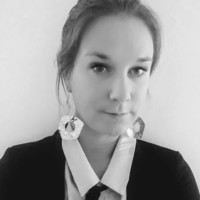
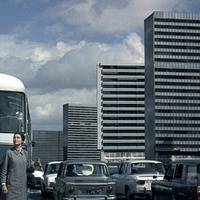
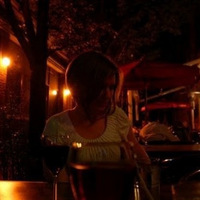

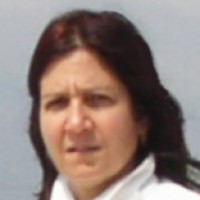

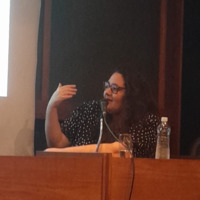
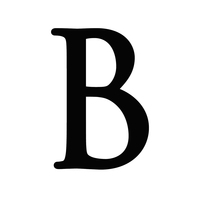
Uploads
Books by Kirsty M Robertson
The Resource guide is also open-source and can be adapted and used by anyone hoping to share information about ecologically-friendly forms of exhibition design.
Every step of exhibition design, from the initial organization to the deinstallation, can benefit from a lower carbon footprint.
This Fieldguide traces the research of the Synthetic Collective and the process of putting together a low carbon exhibition focused on plastics.
Fast Fashion / Slow Art accompanies an exhibition at The George Washington University Museum and The Textile Museum in Washington, DC in autumn 2019 an at Bowdoin College Museum of Art, Brunswick, Maine, in spring 2020.
At a moment when the discipline of Canadian art history seems to be in flux and the study of Canadian visual culture is gaining traction outside of art history departments, the authors of Negotiations in a Vacant Lot were asked: is "Canada" - or any other nation - still relevant as a category of inquiry? Is our country simply one of many "vacant lots" where class, gender, race, ethnicity, and sexual orientation interact? What happens to the project of Canadian visual history if we imagine that Canada, as essence, place, nation, or ideal, does not exist?
The argument that culture is increasingly used as an economic and socio-political resource resonates strongly with the popular strategies of "urban gurus" such as Richard Florida, and increasingly with government policy. Such strategies both contrast with, but also speak to traditions of Canadian state support for culture that have shaped the national(ist) discipline of Canadian art history. The authors of this collection stand at the multiple points where national culture and globalization collide, however, suggesting that academic investigation of the visual in Canada is contested in ways that cannot be contained by arbitrary borders.
Bringing together the work of scholars from diverse backgrounds and illustrated with dozens of works of Canadian art, Negotiations in a Vacant Lot unsettles the way we have used "nation" to examine art and culture and looks ahead to a global future.
Contributors include Susan Cahill (Nipissing University), Mark A. Cheetham (University of Toronto), Peter Conlin (Academia Sinica, Taipei), Annie Gérin (Université du Québec à Montréal), Richard William Hill (York University), Kristy A. Holmes (Lakehead University), Heather Igloliorte (Concordia University), Barbara Jenkins (Wilfrid Laurier University), Alice Ming Wai Jim (Concordia University), Lynda Jessup (Queen’s University), Erin Morton (University of New Brunswick), Kirsty Robertson (Western University), Rob Shields (University of Alberta), Sarah E.K. Smith (Queen’s University), Imre Szeman (University of Alberta), and Jennifer VanderBurgh (Saint Mary’s University).
Alongside, authors consider case studies as diverse as the anti-war work done by John Lennon and Yoko Ono in Montreal and Toronto, recent exhibitions of activist art in Canadian institutions, radical films, performance art, protests against the Olympics, interventions into anti-immigrant sentiment in Montreal, and work by Iroquois photographer Jeff Thomas. Taken together, the writings in Imagining Resistance touch on the local, the global, the national, and post-national to imagine a very different landscape of cultural practice in Canada. "
Papers by Kirsty M Robertson
.... "In 2012, geologist Patricia Corcoran and sculptor Kelly Jazvac travelled to Kamilo Beach, following a tip from oceanographer Charles Moore that the beach was covered in a plastic-sand conglomerate. Moore suspected nearby volcanoes were to blame. In fact, the plastic and beach detritus had been combined into a single substance by bonfires. Human action on the beach had created what Corcoran and Jazvac named “plastiglomerate,” a sand-and-plastic conglomerate. Molten plastic had also in-filled many of the vesicles in the volcanic rock, becoming part of the land that would eventually be eroded back into sand.
The term “plastiglomerate” refers most specifically to “an indurated, multi-composite material made hard by agglutination of rock and molten plastic. This material is subdivided into an in situ type, in which plastic is adhered to rock outcrops, and a clastic type, in which combinations of basalt, coral, shells, and local woody debris are cemented with grains of sand in a plastic matrix.”
More poetically, plastiglomerate indexically unites the human with the currents of water; with the breaking down, over millennia, of stone into sand and fossils into oil; with the quick substration of that oil into fuel; and with the refining of that fuel into polycarbons—into plastic, into garbage. From the primordial muck, to the ocean, to the beach, and back to land, plastiglomerate is an uncanny material marker. It shows the ontological inseparability of all matter, from the micro to the macro...."
To read the essay, go here: www.e-flux.com/journal/78/82878/plastiglomerate/
A shorter version of this essay will be published in the book Craft on Demand: The New Politics of the Handmade, Anthea Black and Nicole Burisch, eds. Expected publication 2017.
The Resource guide is also open-source and can be adapted and used by anyone hoping to share information about ecologically-friendly forms of exhibition design.
Every step of exhibition design, from the initial organization to the deinstallation, can benefit from a lower carbon footprint.
This Fieldguide traces the research of the Synthetic Collective and the process of putting together a low carbon exhibition focused on plastics.
Fast Fashion / Slow Art accompanies an exhibition at The George Washington University Museum and The Textile Museum in Washington, DC in autumn 2019 an at Bowdoin College Museum of Art, Brunswick, Maine, in spring 2020.
At a moment when the discipline of Canadian art history seems to be in flux and the study of Canadian visual culture is gaining traction outside of art history departments, the authors of Negotiations in a Vacant Lot were asked: is "Canada" - or any other nation - still relevant as a category of inquiry? Is our country simply one of many "vacant lots" where class, gender, race, ethnicity, and sexual orientation interact? What happens to the project of Canadian visual history if we imagine that Canada, as essence, place, nation, or ideal, does not exist?
The argument that culture is increasingly used as an economic and socio-political resource resonates strongly with the popular strategies of "urban gurus" such as Richard Florida, and increasingly with government policy. Such strategies both contrast with, but also speak to traditions of Canadian state support for culture that have shaped the national(ist) discipline of Canadian art history. The authors of this collection stand at the multiple points where national culture and globalization collide, however, suggesting that academic investigation of the visual in Canada is contested in ways that cannot be contained by arbitrary borders.
Bringing together the work of scholars from diverse backgrounds and illustrated with dozens of works of Canadian art, Negotiations in a Vacant Lot unsettles the way we have used "nation" to examine art and culture and looks ahead to a global future.
Contributors include Susan Cahill (Nipissing University), Mark A. Cheetham (University of Toronto), Peter Conlin (Academia Sinica, Taipei), Annie Gérin (Université du Québec à Montréal), Richard William Hill (York University), Kristy A. Holmes (Lakehead University), Heather Igloliorte (Concordia University), Barbara Jenkins (Wilfrid Laurier University), Alice Ming Wai Jim (Concordia University), Lynda Jessup (Queen’s University), Erin Morton (University of New Brunswick), Kirsty Robertson (Western University), Rob Shields (University of Alberta), Sarah E.K. Smith (Queen’s University), Imre Szeman (University of Alberta), and Jennifer VanderBurgh (Saint Mary’s University).
Alongside, authors consider case studies as diverse as the anti-war work done by John Lennon and Yoko Ono in Montreal and Toronto, recent exhibitions of activist art in Canadian institutions, radical films, performance art, protests against the Olympics, interventions into anti-immigrant sentiment in Montreal, and work by Iroquois photographer Jeff Thomas. Taken together, the writings in Imagining Resistance touch on the local, the global, the national, and post-national to imagine a very different landscape of cultural practice in Canada. "
.... "In 2012, geologist Patricia Corcoran and sculptor Kelly Jazvac travelled to Kamilo Beach, following a tip from oceanographer Charles Moore that the beach was covered in a plastic-sand conglomerate. Moore suspected nearby volcanoes were to blame. In fact, the plastic and beach detritus had been combined into a single substance by bonfires. Human action on the beach had created what Corcoran and Jazvac named “plastiglomerate,” a sand-and-plastic conglomerate. Molten plastic had also in-filled many of the vesicles in the volcanic rock, becoming part of the land that would eventually be eroded back into sand.
The term “plastiglomerate” refers most specifically to “an indurated, multi-composite material made hard by agglutination of rock and molten plastic. This material is subdivided into an in situ type, in which plastic is adhered to rock outcrops, and a clastic type, in which combinations of basalt, coral, shells, and local woody debris are cemented with grains of sand in a plastic matrix.”
More poetically, plastiglomerate indexically unites the human with the currents of water; with the breaking down, over millennia, of stone into sand and fossils into oil; with the quick substration of that oil into fuel; and with the refining of that fuel into polycarbons—into plastic, into garbage. From the primordial muck, to the ocean, to the beach, and back to land, plastiglomerate is an uncanny material marker. It shows the ontological inseparability of all matter, from the micro to the macro...."
To read the essay, go here: www.e-flux.com/journal/78/82878/plastiglomerate/
A shorter version of this essay will be published in the book Craft on Demand: The New Politics of the Handmade, Anthea Black and Nicole Burisch, eds. Expected publication 2017.
Also available in hard copy from here: https://www.press.jhu.edu/cgi-bin/order.cgi?oc_id=1774
respectively as a document of trauma, an intervention into mainstream normative narratives of nation building, as part of a feminist rethinking of quilts as emancipatory texts, and as a commentary on the role of sewing and handcraft in the attempted creation of docile and assimilated Indigenous children."
This paper received the Priestly Prize, awarded by the Association of Canadian College and University Teachers of English for the best essay published in ESC: English Studies in Canada in 2009-2010.
Reprinted in Jessica Hemmings, ed. Textile Reader. (Berg Press: forthcoming, 2012).
Organized by Kirsty Robertson (Western University) and Eugenia Kisin (NYU Gallatin), A Museum for Future Fossils is a series of events and projects, including exhibitions, a workshop, and a graduate summer school, that will bring together a key group of people working on museums, contemporary art, the Anthropocene, and climate change. The overarching question is: what does it mean to think curatorially about human impact on the environment? Other key questions include: What does it mean to foreground humans in a geologic epoch, and who is excluded from this category of humanness? And: How can artists, curators, scholars and others learn from each other and work together (or apart) to question and unsettle accepted patterns of learning, thinking, and action when it comes to ecological disaster? The overarching goal of the project is to share knowledge, approaches, ideas, and plans for action, in a series of different environments, ranging from intimate working groups, to classroom settings, outdoor spaces, and museums. The locations range from rural settings (Lake Huron), small cities (London, Ontario), larger cities (Toronto), and mega-urban locales (New York City). These locations are also significant in their regional relations, and allow us to think through transnational implications of ecological crises-and art worlds-that cross borders and Indigenous lands and waters.